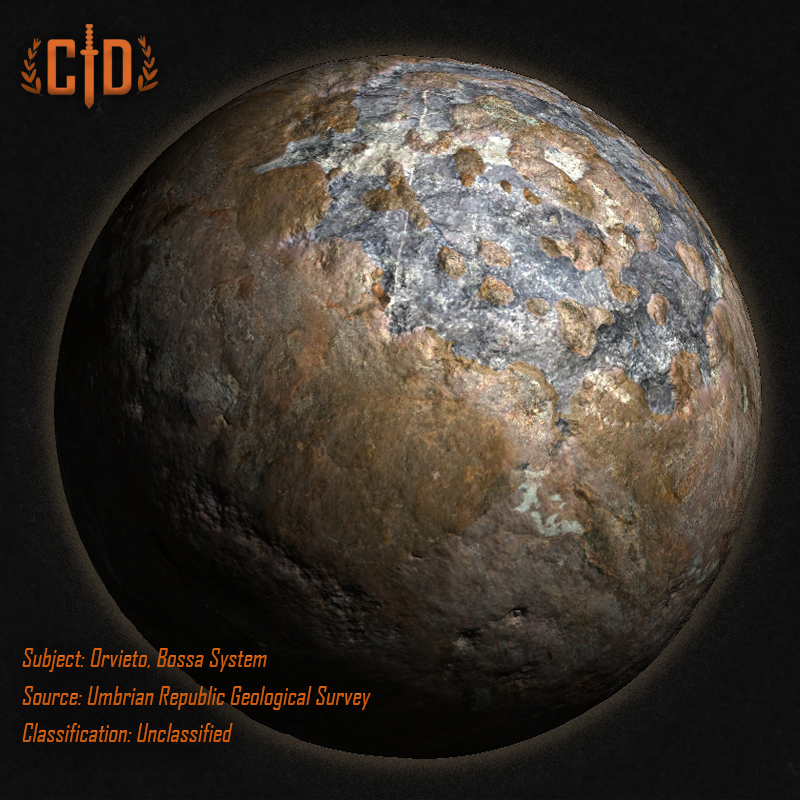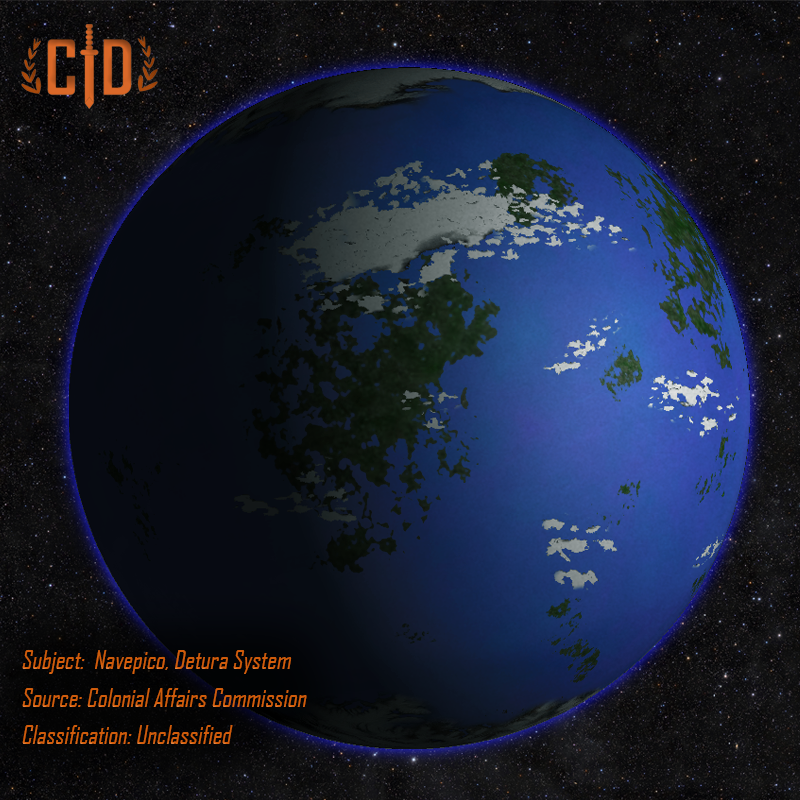
Further refine your search:
Tasovo, Roshia System
From a distance, Tasovo appears as a bright, hot, red-tan marble orbiting its parent white sequence star, Roshia. An unlikely candidate for life, Tasovo would none-the-less support the growth and development of a variety of aquatic and amphibious species in its dark brackish lakes. The rest of the planet is comprised of barren plains and expansive salt flats, baked by the constant bombardment of its sun's UV rays.
Ozenuso, Sieva System
Ozenuso is a temperate, life-bearing moon in the Sieva system. Orbiting the ice giant Ormenta, the world is tidally heated by its parent planet, while also capturing significant energy from the system's blue-white star. The ice giant's strong magnetic fields protect the moon from the star's fierce radiation, while its intense luminosity has been a boon for Ozenuso's plant life.
Orvieto, Bossa System
A cold dreary rock of a world, Orvieto nevertheless proved to be an important target for colonization during the early years of the Republic's first expansion into the wider galaxy. Scans of the terrestrial giant revealed mineral deposits in sufficient quantities to fuel further expansion. It also possessed a very active vulcanism, with tons of molten material deposited on its surface every year.
Navepico, Detura System
A tropical paradise amongst the stars, Navepico was a smaller terrestrial world located in the heart of the Frontier. First surveyed in 31083, the planet's first visitors sent back reports of strange blue beaches and lush vegetation scattered across its hundreds of archipelagos. it would not take long for more detailed expeditions to descend on the planet, confirming initial findings and beginning the process of documenting a fantastic variety of life.
Leciri, Paltano System
Leciri is a moderately sized planet situated perfectly within its parent star's habitability zone. Located in the central core of the Frontier, only a few parsecs from Gela, the planet was originally overlooked for habitation as those colonists looking for comfort settled on that world, while those eager for more remote climes headed deeper into the frontier.
Ghiave-Fouteena, Liguria System
One of the last solar systems explored during the Republic’s initial expansion beyond its first few colonies, Liguria had been an exciting target for Umbrian astronomers. They had initially estimated that the system’s sun, a yellow-white main sequence star, harbored two possible candidates for habitable worlds, as well as an extensive debris field that may have contained valuable minerals.






